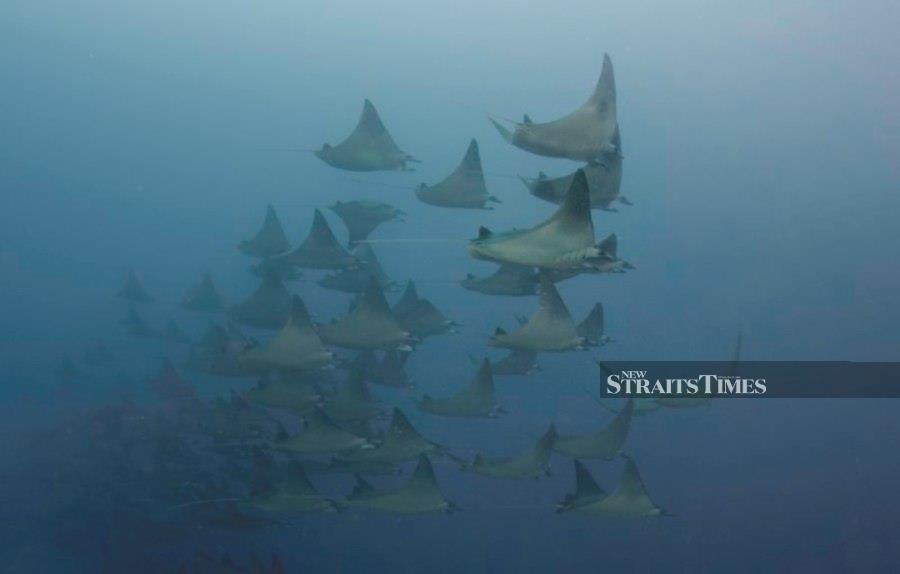By Olivia Miwil - January 26, 2022 @ 8:57am
SEMPORNA: Sabah has once again witnessed the occurrence of rare marine animals - the shortfin devil rays (Mobula kuhlii), sighted by recreational divers affiliated with PADI 5* IDC centre off Si Amil island here.
Subsequently, divers and scientists have worked together to document groups of the rays and led to the research publication in the prestigious journal, Pacific Conservation Biology.
Lead author of the paper David McCann said it was incredible to witness it first hand, an amazing experience for all of the divers with them.
The shortfin devil ray, listed as Endangered on the International Union for the Conservation of Nature (IUCN) Red List, is a rare sight for many.
As close relatives of manta rays, devil rays are less commonly seen by divers underwater, due to their elusive behaviour and, normally, more pelagic nature.
However, they are noted for swimming together in aggregations known as fevers, which can number in the hundreds.
The shortfin devil ray is one of the smaller species of devil ray, with a wingspan of only 135cm at maximum– which is shorter than an average door.
"In any case it is a fantastic example, yet again, of the incredible marine biodiversity of Sabah's waters, particularly the Semporna region.
"The area is already world-renowned for spectacular diving and what can be found here – these sightings show that there may yet be more to be found and reported.
"Hopefully appropriate measures will be taken to protect these incredible animals and their habitat," he said in a joint statement.
Universiti Malaysia Sabah (UMS) Borneo Marine Research Institute Assoc Prof Dr Mabel Manjaji Matsumoto said the presence of devil rays at Si Amil provided a unique opportunity for divers to contribute to citizen science.
He was referring to the sightings and numbers seen collated from the divers' logbooks and passed on to UMS marine biologists.
"The video footage and numbers collected are invaluable for our records to produce the scientific paper and set the baseline for further studies in this area.
"The expansion of Marine Protected Areas (MPAs) or creation of a Locally Managed Marine Area (LMMA) can be explored to both facilitate protection of these species and make the most of this incredible spectacle through tourism, much like how Pulau Sipadan Marine Park is a world-renowned tourist attraction," he said.
The publication states further research would also enable the development of effective management plans to conserve the species and local population of rays.
Given the high value of tourism that sharks and rays bring toSabah – estimated at US$10 million (RM41.9mil) annually in a previous scientific study-conservation of these species is important for biodiversity and livelihoods alike.
As for the presence of the species of Si Amil island, Marine Research and Conservation Foundation's researcher Dr Gonzalo Araujo said it remained a mystery.
However, he added that schooling behaviour was often associated with safety, reproduction, socialising, cleaning or feeding.
"It would be fantastic to carry out research in the area to find out more. From a threatened and little-known species perspective, Si Amil is definitely an area of interest."

Comments
Post a Comment